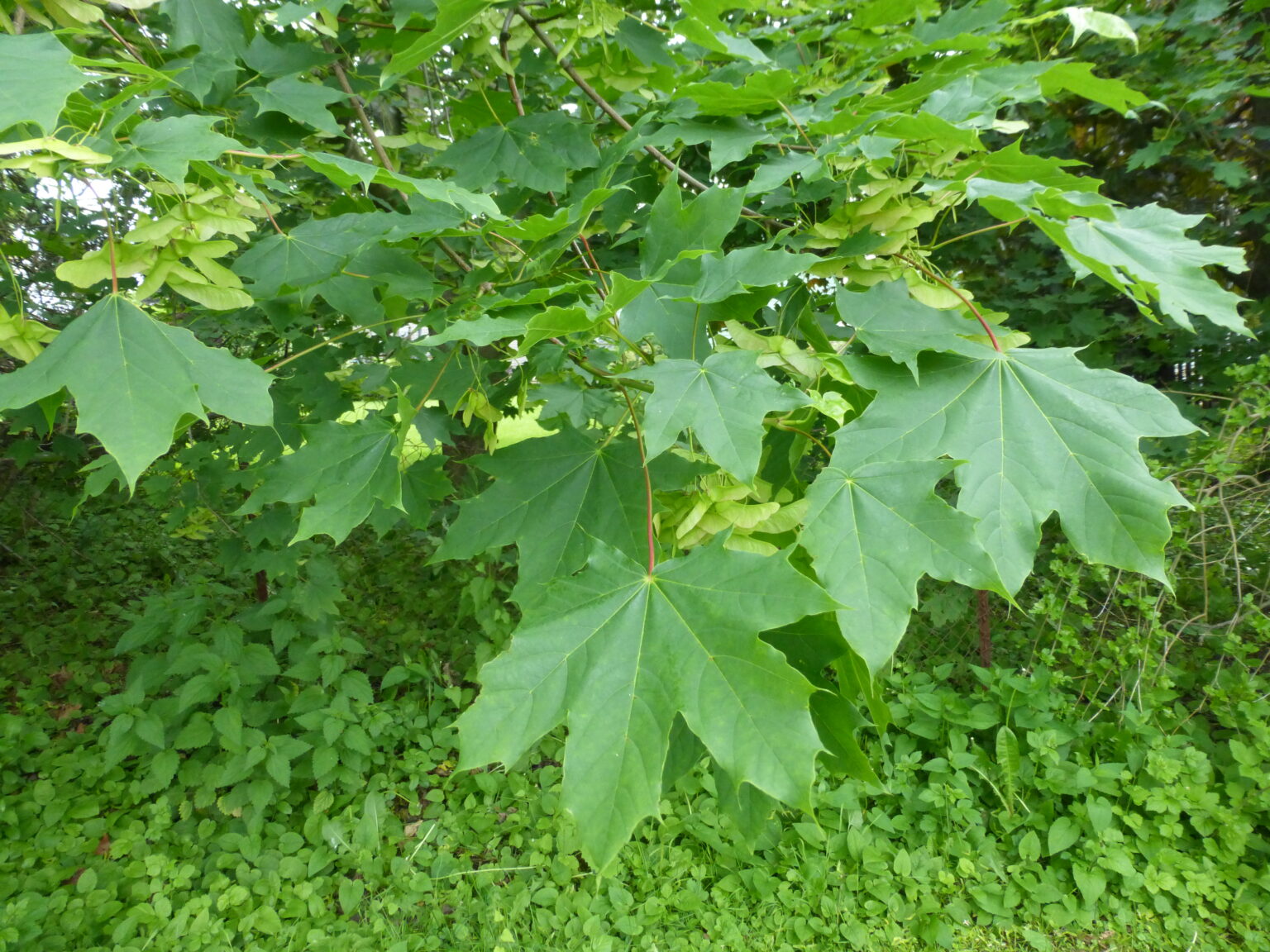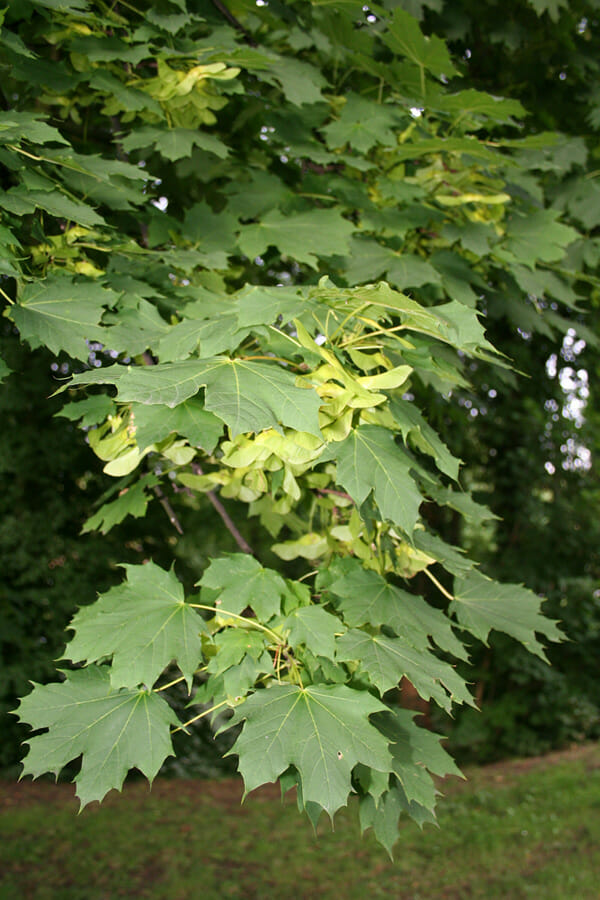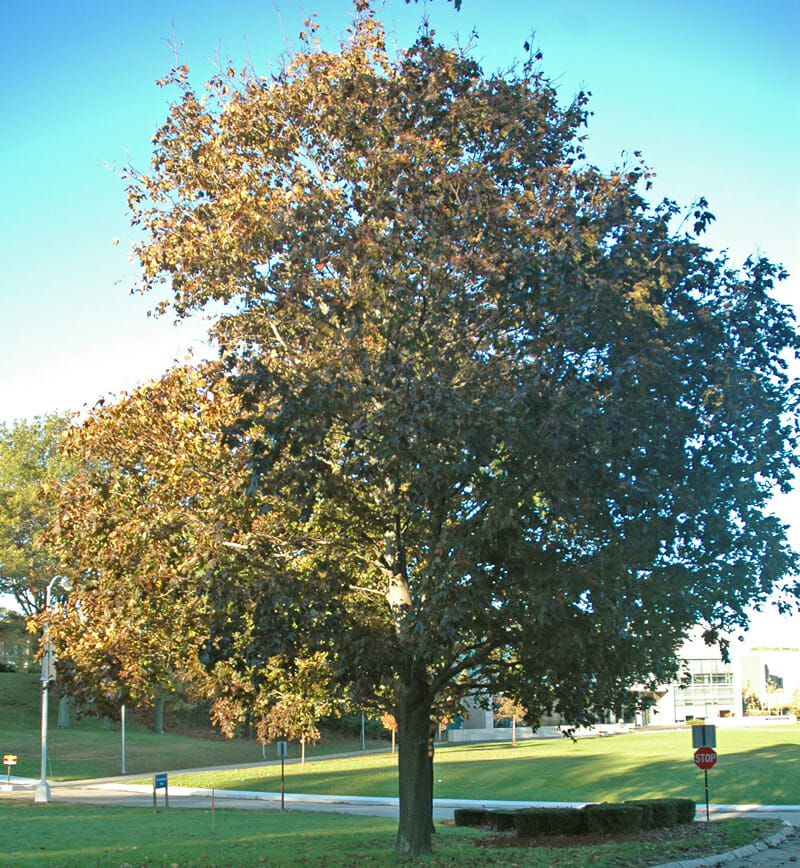
However, Norway maple has one definitive characteristic a milky sap is present when a petiole is broken. The leaves are very similar to sugar maple. The leaves are 5 to 7-lobed with irregular serrated margins, measuring 4 to 7 inches in both length and width, petioles are 3 to 4 inches in length.

Seed Stratification: Prechill 2 months at 34☏ to 40☏ Site requirements vary with the species of maple. Site Requirements: Maple trees perform best in moist, well-drained soils. Height: Mature height varies with species. Tree canopies may be very dense or wide spreading. Mature Shape: Maples typically have a large, rounded crown. Slower growing maples have heavier, harder wood, making them less susceptible to branch and limb drop. Maples that are fast growing tend to have weak wood and may suffer from wind and ice damage. When selecting a maple tree, be sure to select a species suited for Iowa's winter. Most fall into zones 4 through 8, but some are less tolerant of cold or heat than others. It can reach heights of up to 100 feet, but is commonly seen at 40 to 60 feet, with a trunk diameter of 1 to 2 feet.
#Norway maple pdf#
Return to the Table of Contents | Download a PDF of Plant Invaders of Mid-Atlantic Natural AreasĪnd questions about the website should be directed to the webmaster. Native maples like sugar maple ( Acer saccharum) and red maple ( Acer rubrum) would be good substitutes for this invasive tree. Seedlings can be pulled by hand and small to large trees can be cut to the ground, repeating as necessary to control any re-growth from sprouts (see Control Options). Distinguish Norway by milky white sap, broad leaves, hair-like leaf tips, samara wings straight out, yellow fall foliage.ĭon’t plant Norway maple. Look-alikes: other maples including sugar maple ( Acer saccharum) and red maple ( Acer rubrum).Spreads: to new areas by vegetative reproduction and seed.


in 1756 and soon began offering it for sale.

John Bartram of Philadelphia first introduced Norway maple from England to the U.S. Jan Samanek, State Phytosanitary Administration Norway maple was introduced for use as an ornamental landscape plant.


 0 kommentar(er)
0 kommentar(er)
